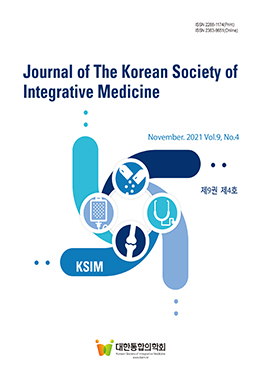Purpose : This study aimed to apply muscle relaxation exercise and ultrasound therapy as an effective treatment method for tension headache patients by comparatively analyzing the muscle mechanical properties, neck disorder index, and headache impact test.
Method : The subjects were classified into three groups based on the intervention received: the therapeutic ultrasound (n=15, group Ⅰ), placebo therapeutic ultrasound combined with the suboccipital release (n=15, group Ⅱ), and therapeutic ultrasound combined with suboccipital release (n=15, group Ⅲ) groups. The intragroup and intergroup differences in muscle mechanical properties, neck disability index, and headache impact test were compared and analyzed.
Result : The comparison and analyses of the changes in muscle tone and post hoc analysis revealed statistically significant intragroup decreases in the suboccipitalis and upper trapezius in groups Ⅰ and Ⅲ. Furthermore, statistically significant intergroup differences in the upper trapezius with a greater change in group Ⅲ than in group Ⅱ and suboccipitalis with greater changes in group Ⅲ than in groups Ⅰ and Ⅱ were observed. The comparison and analyses of the changes in muscle stiffness and post hoc analysis revealed statistically significant intragroup decreases in the upper trapezius in group Ⅰ and suboccipitalis in group Ⅲ. Moreover, statistically significant intergroup differences in both muscles with greater changes in group Ⅲ than in group Ⅱ for both cases were observed. The comparison and analyses of the changes in the neck disability index and post hoc analysis revealed statistically significant intragroup decreases in all three groups and statistically significant intergroup differences with greater changes in group Ⅲ than in groups Ⅰ and Ⅱ. The comparison and analyses of the changes in the headache impact test and post hoc analysis revealed statistically significant intragroup decreases in all three groups and a statistically significant intergroup difference with greater changes in group Ⅲ than in groups Ⅰ and Ⅱ.
Conclusion : The therapeutic ultrasound and suboccipital muscle release exercise effectively increased the flexibility of the muscles around the cervical vertebrae and reduced muscle tension and stiffness in tension-type headache patients.




